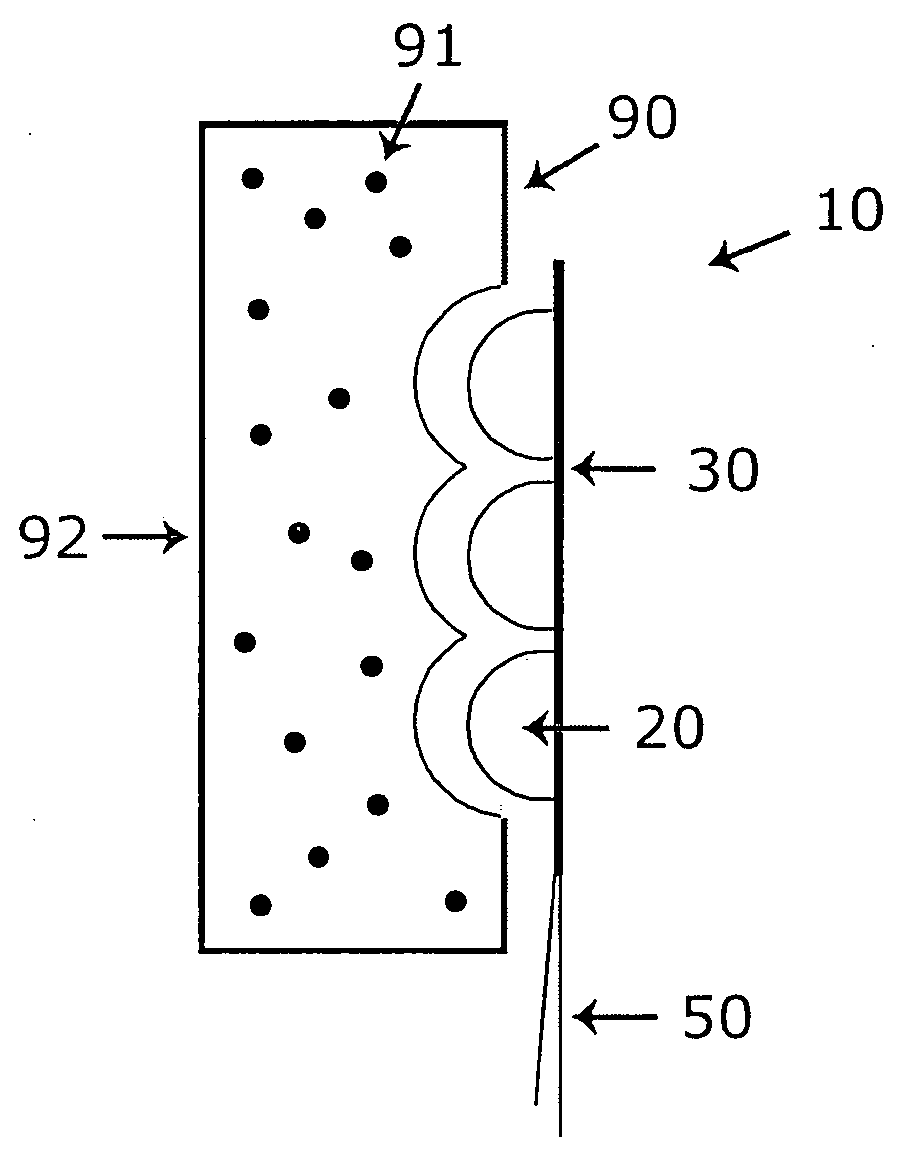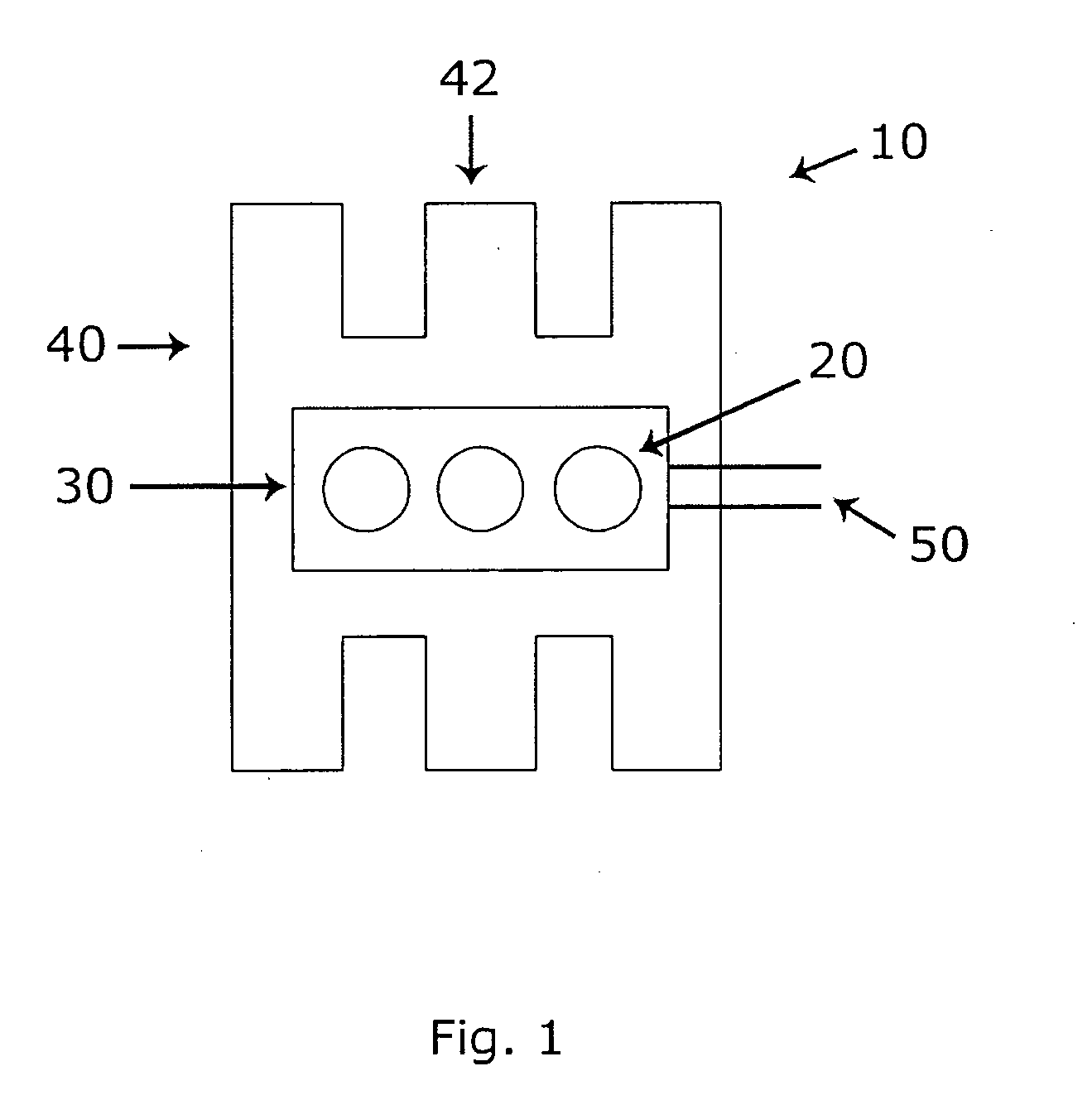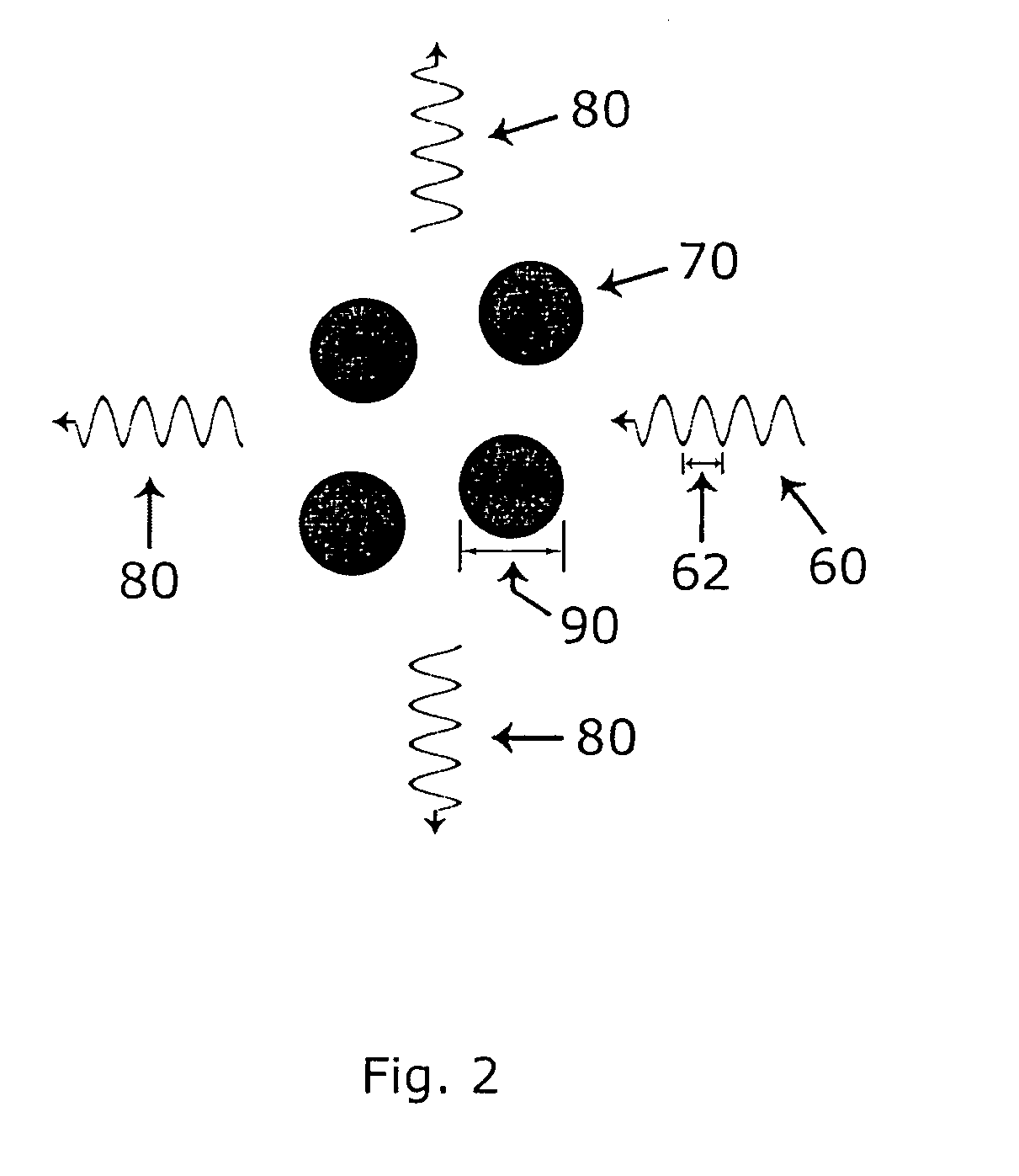Diffuser for LED light sources
a technology of led light source and diffuser, which is applied in the direction of instruments, lighting and heating apparatus, semiconductor devices for light sources, etc., can solve the problems of reducing luminous efficiency, reducing light loss, and reducing light loss, so as to reduce heat loss and reduce heat loss. , the effect of large surface area
- Summary
- Abstract
- Description
- Claims
- Application Information
AI Technical Summary
Benefits of technology
Problems solved by technology
Method used
Image
Examples
Embodiment Construction
[0016]Reference will now be made in detail to the present preferred embodiments of the invention, examples of which are illustrated in the accompanying drawings. Wherever possible, the same reference numbers are used in the drawings and the description to refer to the same or like parts.
[0017]According to the design characteristics, a detailed description of the current practice and preferred embodiments is given below.
[0018]FIG. 1 is a view of a present state-of-the-art LED light source 10 showing the reason for its directionality of light output and the construction used for removing heat. As shown in FIG. 1, the LEDs 20 are mounted on a circuit board 30. Since said LEDs are point sources of light, the light emitted from the said LED light source appears concentrated in beams. Said circuit board provides electrical interconnects for the LEDs 20, and may also provide electrical isolation. Wires 50 come from the circuit board to power the LEDs from a power source (not shown). The ci...
PUM
 Login to View More
Login to View More Abstract
Description
Claims
Application Information
 Login to View More
Login to View More - R&D
- Intellectual Property
- Life Sciences
- Materials
- Tech Scout
- Unparalleled Data Quality
- Higher Quality Content
- 60% Fewer Hallucinations
Browse by: Latest US Patents, China's latest patents, Technical Efficacy Thesaurus, Application Domain, Technology Topic, Popular Technical Reports.
© 2025 PatSnap. All rights reserved.Legal|Privacy policy|Modern Slavery Act Transparency Statement|Sitemap|About US| Contact US: help@patsnap.com



